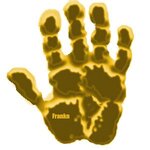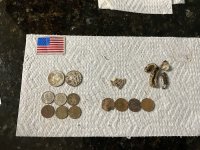How fast and deep do things get buried underground?
at what depth do things go into the ground every 10 years? and after a century? and after a millenium?
What is the difference in burial rate between sand, clay, broadleaf forest, arid forest, grassland, etc?
I am guessing that coins take about 50 years to move 4-5 inches into the roots that jumble things up, and then they go slower once they are under a root line? so really the only thing burying the metal is the roots and animal movement that makes voids around the metal and make organic matter build up on top?
there is a 2000 year old fortification near where i live, but i figure after that long, will i have a decent chance of signals 6+ inches deep that are recent?
at what depth do things go into the ground every 10 years? and after a century? and after a millenium?
What is the difference in burial rate between sand, clay, broadleaf forest, arid forest, grassland, etc?
I am guessing that coins take about 50 years to move 4-5 inches into the roots that jumble things up, and then they go slower once they are under a root line? so really the only thing burying the metal is the roots and animal movement that makes voids around the metal and make organic matter build up on top?
there is a 2000 year old fortification near where i live, but i figure after that long, will i have a decent chance of signals 6+ inches deep that are recent?
Last edited:
Upvote
0



 Whatever...I like finding them.
Whatever...I like finding them.








